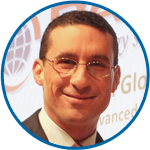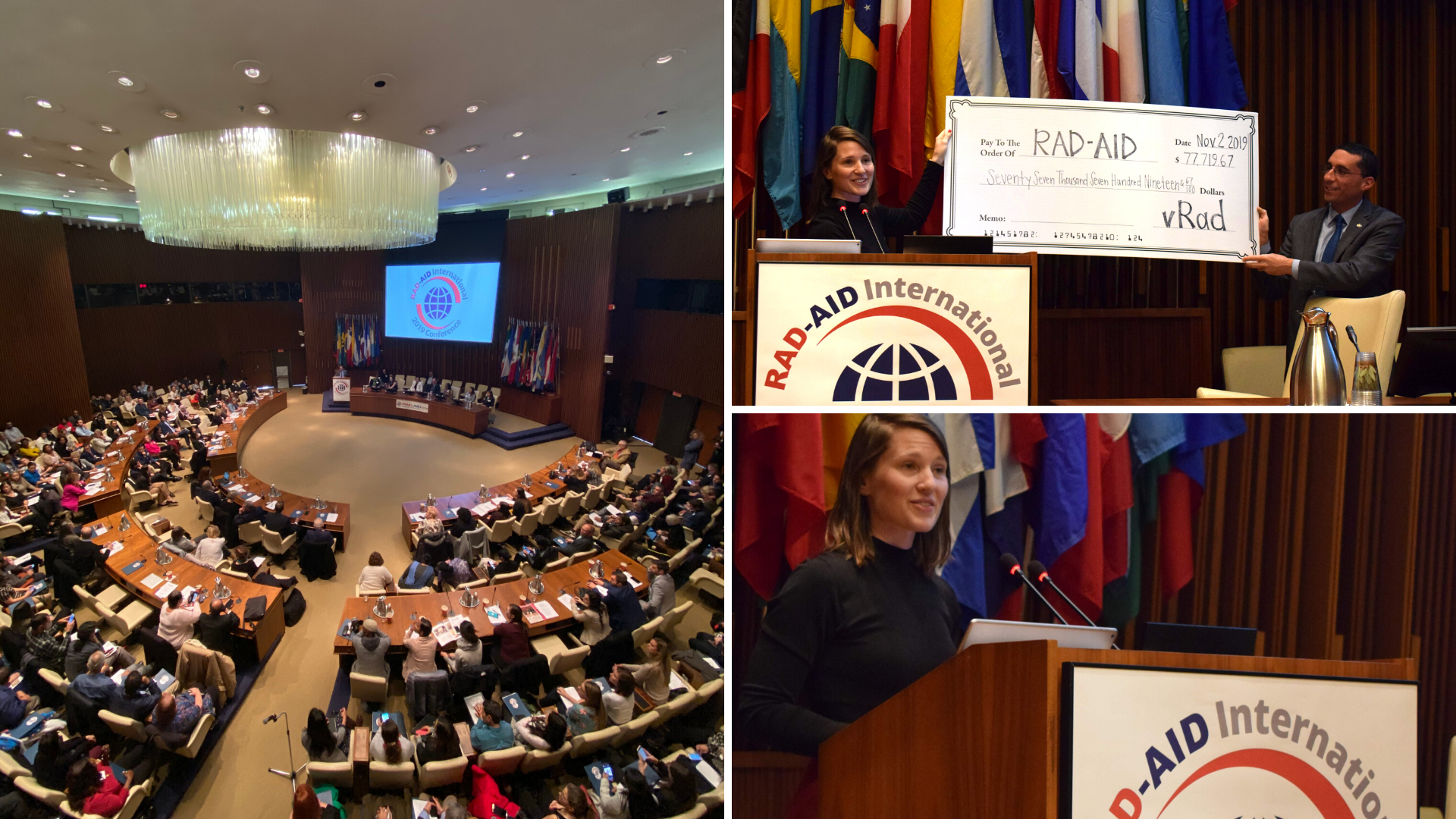10 Reasons I’m a vRad Lifer
Originally published by Michael Walter on Radiology Business Looking back on my career as a radiologist—now in its 22nd year and...

Remote radiologist jobs with flexible schedules, equitable pay, and the most advanced reading platform. Discover teleradiology at vRad.

Radiologist well-being matters. Explore how vRad takes action to prevent burnout with expert-led, confidential support through our partnership with VITAL WorkLife. Helping radiologists thrive.

Visit the vRad Blog for radiologist experiences at vRad, career resources, and more.

vRad provides radiology residents and fellows free radiology education resources for ABR boards, noon lectures, and CME.

Teleradiology services leader since 2001. See how vRad AI is helping deliver faster, higher-quality care for 50,000+ critical patients each year.

Subspecialist care for the women in your community. 48-hour screenings. 1-hour diagnostics. Comprehensive compliance and inspection support.

vRad’s stroke protocol auto-assigns stroke cases to the top of all available radiologists’ worklists, with requirements to be read next.

vRad’s unique teleradiology workflow for trauma studies delivers consistently fast turnaround times—even during periods of high volume.

vRad’s Operations Center is the central hub that ensures imaging studies and communications are handled efficiently and swiftly.

vRad is delivering faster radiology turnaround times for 40,000+ critical patients annually, using four unique strategies, including AI.
.jpg?width=1024&height=576&name=vRad-High-Quality-Patient-Care-1024x576%20(1).jpg)
vRad is developing and using AI to improve radiology quality assurance and reduce medical malpractice risk.

Now you can power your practice with the same fully integrated technology and support ecosystem we use. The vRad Platform.

Since developing and launching our first model in 2015, vRad has been at the forefront of AI in radiology.

Since 2010, vRad Radiology Education has provided high-quality radiology CME. Open to all radiologists, these 15-minute online modules are a convenient way to stay up to date on practical radiology topics.

Join vRad’s annual spring CME conference featuring top speakers and practical radiology topics.

vRad provides radiology residents and fellows free radiology education resources for ABR boards, noon lectures, and CME.

Academically oriented radiologists love practicing at vRad too. Check out the research published by vRad radiologists and team members.

Learn how vRad revolutionized radiology and has been at the forefront of innovation since 2001.

%20(2).jpg?width=1008&height=755&name=Copy%20of%20Mega%20Nav%20Images%202025%20(1008%20x%20755%20px)%20(2).jpg)

Visit the vRad blog for radiologist experiences at vRad, career resources, and more.


Explore our practice’s reading platform, breast imaging program, AI, and more. Plus, hear from vRad radiologists about what it’s like to practice at vRad.

Ready to be part of something meaningful? Explore team member careers at vRad.
3 min read
 Daniel J. Mollura, MD
:
February 10, 2020
Daniel J. Mollura, MD
:
February 10, 2020
.png)
3 to 4 billion people lack access to medical imaging and its potentially life-saving diagnostic insights, according to the World Health Organization (WHO). RAD-AID was founded in 2008 to answer this need. What began with a few radiology professionals has grown to include more than 10,000 volunteers from 100 countries, 75 university-based chapters, on-site programs in over 30 countries, and an annual conference on global health radiology.
vRad is proud to support RAD-AID through the First Read Initiative. We connected with Dan Mollura, MD, RAD-AID’s founder, president and chief executive officer, to learn more about how the organization helps people around the world.
RAD-AID is primarily a platform that channels and enables the skills, expertise and generosity of the radiology community to reach patients and hospitals in need. So, it's really the radiology community – including physicians, technologists, nurses, physicists, administrators, medical students and IT professionals – that has enabled the impact. RAD-AID is a platform that channels their energy and expertise to help those who need us.
.png?width=1920&name=RAD-AID_FRI%20(1).png)
Well, if you ask me, I'm excited about all of them! I love every single project, and I really do mean that. But they're all uniquely different, and the reason why they're different is because of our method.
Our programs start off with a Radiology-Readiness Assessment. It emphasizes not what a hospital needs – because they often need everything – but instead what they already have. By leveraging what they have and understanding their goals, we can fill in gaps and help them get to those goals. That's why every single program turns out to be very different – to uniquely adapt an institution’s radiology capacity-building to the local context and community.
For example, RAD-AID Peru was just launched a few weeks ago. The program addresses women's health, right at the base of the Andes Mountains in Cusco. Now, this is a very different type of location and clinical context than, say, Chandigarh, where we put a mobile women's health program in the northern part of India. Imagine a rural community in the Andes Mountains versus a marginalized community in northern India. Both programs are women’s health. But the program in Peru is a small clinic called CerviCusco linked to a tertiary care center in Lima roughly 700 miles away, whereas the Chandigarh program is a mobile mammography truck with a relatively nearby hospital.
They're fundamental. Partnerships bring together vital expertise. Radiology is a very diverse sector of healthcare. There are all sorts of entities that have very focal areas of expertise – vRad being a terrific example. You have hundreds of wonderful radiologists with great experience as part of a nationwide radiology enterprise. Also, as a leading teleradiology organization, vRad staff members have strong bonds to each other. They deliver care all over – across many, many regions. That experience is a vital perspective to have as a contribution to RAD-AID.
We also partner with manufacturers of radiology equipment, and, in the technology space, AI companies and PACS companies.
Since 2015 RAD-AID has been designated in ‘official relations’ with the World Health Organization, which makes us a formally recognized supporter of the United Nations system. This important relationship gives us a way to have dialogue with the international health policy institutions about access to radiology and the goals of disease control.
We also have partnerships through about 80 RAD-AID Chapters at accredited universities that train radiology professionals in the United States and Canada.
Josh has an energetic spirit about wanting to support RAD-AID’s mission. He invited me to vRad’s annual CME conference in Las Vegas in 2017, where he introduced me to Shannon [Werb, vRad president and chief operating officer] and Ben [Strong, vRad chief medical officer]. They really wanted to integrate a charitable spirit into the daily work of the radiologists at vRad. We started coming up with ideas of just how vRad and RAD-AID could work together. That was the genesis of First Read Initiative – to enable vRad radiologists to donate the equivalent of the cost of the first read that they would do on their schedule.
After a year of diligent work on the part of Josh and the vRad team, First Read Initiative launched in early 2018. By November 2018 Josh was able to present a check for $72,000 to us at our RAD-AID Conference, held at the WHO building in D.C. The following year, Mary Huff presented another check for over $77,000. vRad’s support has been amazing.

For vRad radiologists, please consider joining the First Read Initiative. You can sign up through the RadHQ portal.
Anyone who wants to learn more, volunteer or make a donation can visit the RAD-AID website.
Back to Blog
.png)
Originally published by Michael Walter on Radiology Business Looking back on my career as a radiologist—now in its 22nd year and...
.png)
1 min read
For the latest information on vRad’s Artificial Intelligence program please visit vrad.com/radiology-services/radiology-ai/ Originally...
.png)
Originally published by Michael Walter on Radiology Business The Portland Clinic (TPC), a physician-owned, multi-specialty group...
vRad (Virtual Radiologic) is a national radiology practice combining clinical excellence with cutting-edge technology development. Each year, we bring exceptional radiology care to millions of patients and empower healthcare providers with technology-driven solutions.
Non-Clinical Inquiries (Total Free):
800.737.0610
Outside U.S.:
011.1.952.595.1111
3600 Minnesota Drive, Suite 800
Edina, MN 55435